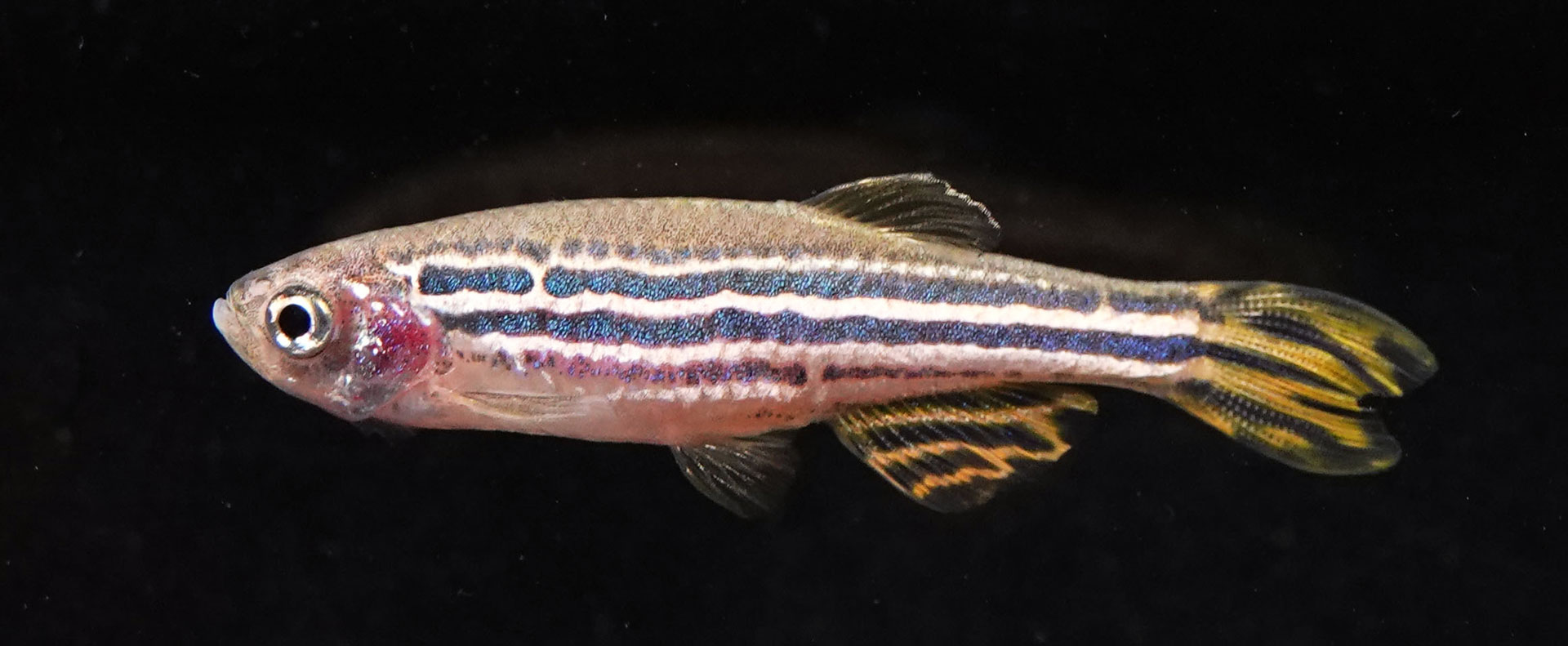Highlights
New Essential Chimeric Chiron Proteins Drive Coevolution of NAD+ Biosynthetic Pathway by Regulating NAD+ Levels in Zebrafish Embryonic Development

zebrafish (Credit: IHB)
The research group led by Prof. HE Shunping from the Institute of Hydrobiology (IHB) of the Chinese Academy of Sciences revealed that the origin of new chimeric chiron genes may be involved in adaptive evolution by integrating and impacting the nicotinamide adenine dinucleotide (NAD)+ biosynthetic pathway. The study was published in Science China Life Sciences.
How new genes are retained and evolve new functions is one of the most fundamental questions in molecular evolution and species differentiation. The origination and evolution of new genes are important for generating genetic novelties for adaptive evolution and biological diversity. However, their potential roles in embryonic development, evolutionary processes into ancient networks, and contributions to adaptive evolution remain poorly investigated.
By investigating the zebrafish genome and protein database, the researchers first identified a set of new chimeric genes in the zebrafish genome and detected a new chimeric retrogene family, named “the chiron family”. The chiron gene originated through retroposition of nampt in Danioninae 48-54 million years ago (Mya) and expanded into five duplicates (chiron1-5) in zebrafish 1-4 Mya.
Combining 53 transcriptome sequencing data and in situ hybridization analyze, they found that zebrafish chirons likely originated in embryonic development and gradually evolved extensive-expression patterns in the testes, indicating that their expression breadth was increasing and that they were in the progress of evolving broader functions.
Enzymatic activity experiment indicated that chirons could regulate NAD+ levels in the salvage pathway and were functionally conserved in basic NAD+ rate-limiting enzymatic function.
The morpholino-mediated knockdown experiments and CRISPR-Cas9 assay showed that loss of chirons could lead to the lethal effect of the zebrafish early embryo, indicating that new chirons may play an essential function during the early embryo development.
Finally, through examining the genetic evolution of the whole NAD+ biosynthetic-pathway after the chirons emergence, they found that the rapid evolution of chiron genes may drive the coevolution of the NAD+ pathway by impacting two energy metabolism genes (nmnat1 and naprt) to be under positive selection. This coevolution may enhance their effects related to metabolic efficiency, energy stresses, and innate and adaptive immunity in subfamily Danioninae fishes.
Together, these results mainly demonstrated that the origin of new chimeric chiron genes may be involved in adaptive evolution by integrating and driving the NAD+ biosynthetic pathway. This coevolution may contribute to the physiological adaptation of Danioninae fishes to widespread and varied biomes in Southeast Asian.